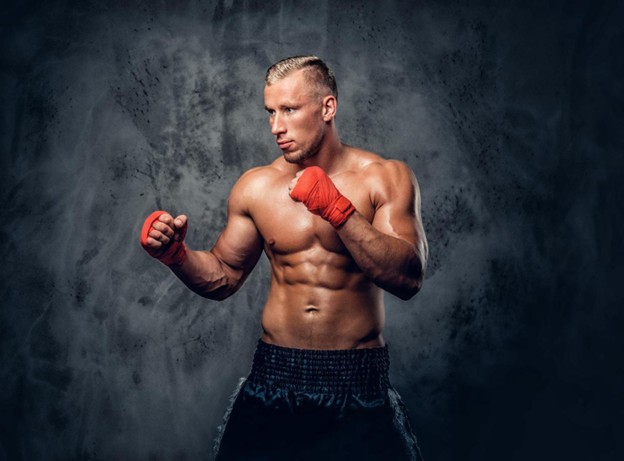
There’s no slow build with MMA. It pulls you in the moment that first strike lands. You don’t need to know every fighter’s record to feel the tension. That’s why it works anywhere. And right now, its reach isn’t just wide—it’s deep. Fight cards are global, fighters are becoming household names far beyond their home countries, and fans? They’re not just tuning in—they’re joining fantasy leagues, watching embedded series, even betting smart on matchups they’ve studied like homework.
In the U.S., interest is booming in places you might not expect—like Texas. Combat sports have always had a loyal crowd there, but MMA has carved out something new. It’s sharp, current, and pulling in younger audiences fast. That’s also sparked a fresh wave of interest in legal betting. As covered in recent overviews of Texas wagering, there’s a real movement to bring regulated sportsbooks to life—because people want more than to watch. They want to play a part in the action. And with UFC headliners becoming regular weekend events, MMA is one of the top drivers of that demand.
Global reach, growing speed
The numbers are hard to ignore. UFC broadcasts now reach over 650 million homes in 170+ countries, with fights translated into more than 40 languages. The promotion’s social following spans hundreds of millions across platforms. And UFC 300 reportedly sold over 1 million pay-per-view units—a milestone that reaffirmed the sport’s commercial power and fan loyalty. The hype wasn’t just loud—it was measurable.
And the sport’s expansion isn’t limited to flagship cards. The UFC’s “Fight Night” events, often featuring rising stars and regional talents, regularly bring in hundreds of thousands of viewers and sell out mid-sized venues from Austin to Abu Dhabi. That consistency (week after week) keeps fans plugged in even between major events.
Brazil: Where it’s not just a sport—it’s identity
No conversation about MMA’s popularity is complete without Brazil. Jiu-jitsu is in the DNA, but it goes beyond technique. It’s a sense of pride. From the favelas to the pro gyms of Rio, fighting is a way out and a way forward. The country has produced legends like Anderson Silva and Amanda Nunes, and every year, new names rise from local circuits like Jungle Fight and Shooto.
MMA here is passed down, gym to gym, generation to generation. And that pipeline shows no signs of slowing.
What’s more, televised fight coverage on Brazilian networks consistently ranks among the top weekend programming. Families gather to watch—not just hardcore fans. Fighters are household names, and their wins are celebrated like national victories.
Eastern Europe’s quiet dominance
The explosion of Eastern European fighters in the UFC isn’t a coincidence. It’s the result of years of disciplined systems: combat sambo in Russia, Greco-Roman wrestling in Georgia, striking schools in Poland. KSW (Konfrontacja Sztuk Walki) has become a national institution in Poland, pulling massive live crowds and televised ratings that compete with top-tier sports.
In Chechnya and Dagestan, government-supported fight programs and local heroes have created a cycle of success—youths look up to fighters, train year-round, and aim directly for UFC contracts. The depth of talent coming out of this region is reshaping entire divisions.
Africa: The new frontier
Africa’s story in MMA is just beginning, but its impact is already global. Fighters like Francis Ngannou, Israel Adesanya, and Kamaru Usman have turned heads and brought attention to countries like Cameroon and Nigeria. Now, gyms are opening in cities like Lagos and Yaoundé, run by fighters who’ve made it and want to train the next wave.
There’s no flashy marketing needed here. The will is already there. Infrastructure is catching up.
South Africa, in particular, is home to EFC (Extreme Fighting Championship), a promotion that’s gaining traction across the continent and grooming regional talent for international success. Fighters aren’t just crossing over—they’re getting signed.
Cultural resonance everywhere it lands
What makes MMA click globally is that it meets people where they are. In Japan, the legacy of PRIDE and the flair of entrances and honor-based matchups lives on through promotions like RIZIN. In the UK, fight cards are social events—complete with chants, singalongs, and full pubs. In Mexico, you’ll see boxing grit and wrestling rhythm collide in the octagon.
This isn’t globalization—it’s connection. MMA adapts to its audience. That’s why it keeps expanding without losing its soul.
Looking ahead
The future is more interactive than ever and covers more than one region and platform. Fighters are turning into people who have an impact. Streaming deals are becoming more common in local areas. Even gym chains are seeing more MMA-focused programs, not just boxing or fitness kickboxing, but full-on grappling and striking classes.
More than just a sport, MMA is a story that is happening right now all over the world, written with elbows, feints, takedowns, and heart.
And the people in the audience? It keeps getting bigger, one fight at a time.


